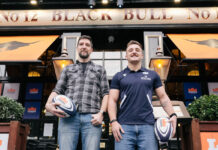By Guy Chatfield
FRAUDULENT behaviour seems to surround us these days – from lords of the realm and MPs fiddling their expenses to the taxi driver who tried to short change me on a journey home recently!
In any arena where money changes hands, I suppose there is always the temptation for some to try to make a fast buck.
With the price of the wines of the ‘big guns’ in Bordeaux soaring each vintage over the last 15 years, there have been instances of less than scrupulous individuals trying to pass off inferior wines as the quality Chateaux. This is not a problem isolated to expensive kit as some dishonest producers are attempting to pass-off dodgy wine in the bulk market too, specifically Pinot Grigio.
Nowadays there are numerous regulatory checks and balances in every part of the wine world and, through sophisticated traceability procedures, the authorities can ascertain origins and quality fairly quickly. Also, certain producers hold ‘re-corking’ sessions where the head winemaker tastes your very expensive wine, authenticates and re-seals it, allowing you peace of mind that everything is A-okay.
What really interests me, though, is the stories of fraud that have appeared in the press about older vintages of famous wines.
Probably the most high profile of these was in 2005 when the ultra-wealthy American art and wine collector Bill Koch tried to exhibit four bottles of what he thought was Chateau Lafite 1784 and 1787 vintages originally owned by the US President Thomas Jefferson at the Boston Museum of Fine Art.
The suspicion of fraud first raised its head when, before displaying them, the museum asked to see all notes of authentication and provenance. When only superficial ones are said to have been produced, an investigation began to throw up some interesting questions, amongst those the ‘Th. J’ engraving, which the vendor proposed as the mark of the US President, appeared to have been done with an electric power tool which was obviously not available at the time.
Koch took legal action against almost everyone involved and the case continues to languish in the US Federal court to this day; although I’m sure if I had spent £105,000 per bottle, I too would pursue it as far as I possibly could!
It just goes to show this kind of issue is not limited to certain price points.
So, be careful out there!
The world’s oldest known Champagne still in existence, recognised by The Guinness Book of Records, is the 1825 Perrier-Jouet.



















